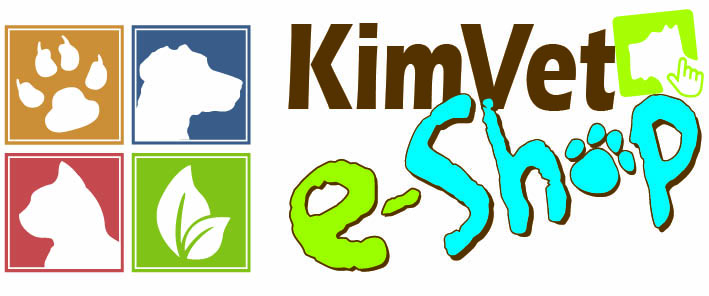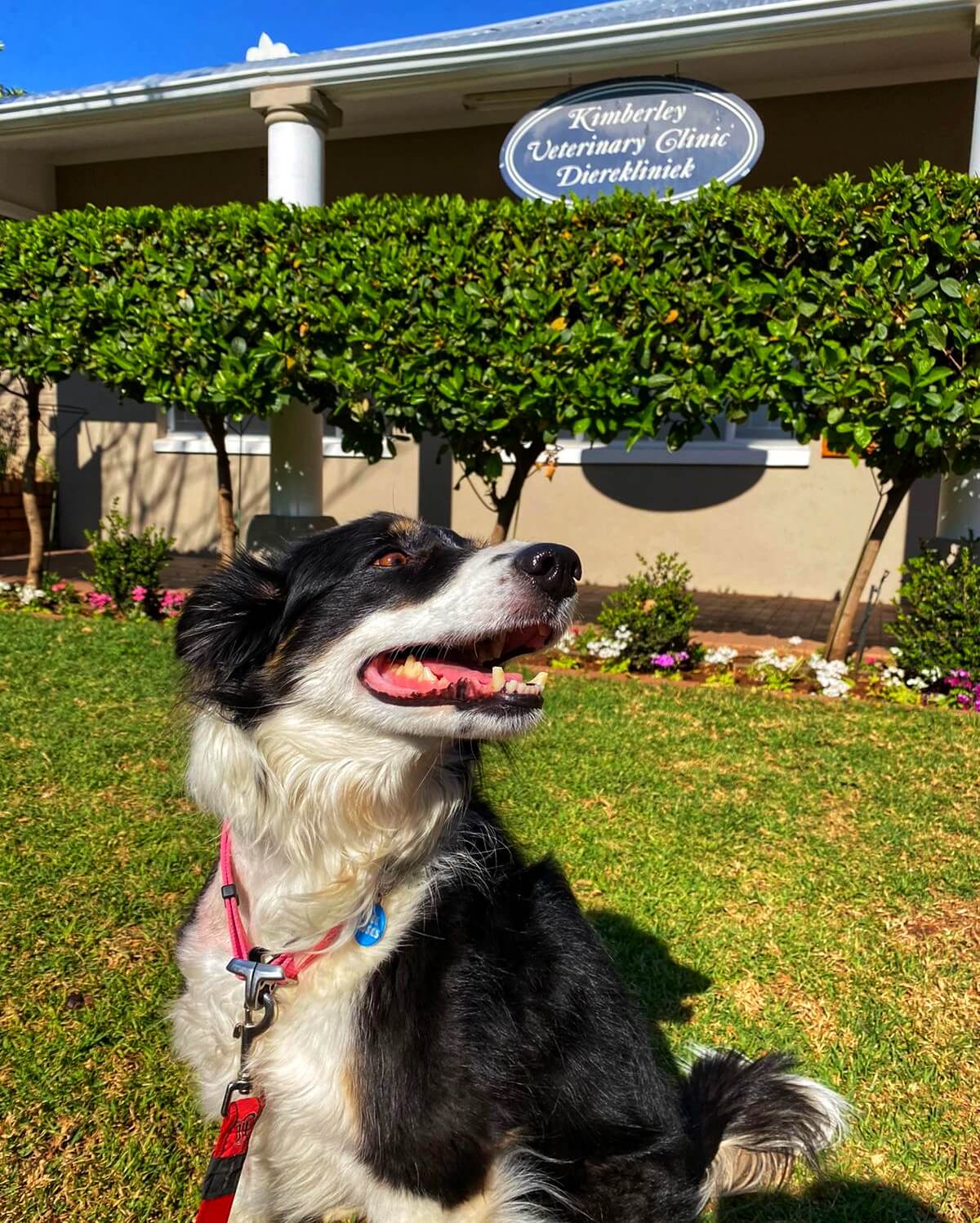
by Rina Van Eeden | Aug 26, 2021 | Dogs, Feel Good Stories
Meet Jessie.
Jessie the Border Collie is a working scent detection dog working in the field of conservation research. Over the past 7 years, the role she played in the research for elusive and endangered species has been paramount.
Unfortunately, in August Jessie was diagnosed with Lymphoma (cancer of the lymph nodes). Luckily, she has the most wonderful mom who will stop at nothing to make this miracle pup better. About two weeks ago, Jessie started her journey to recovery and is undergoing chemotherapy at our clinic. While this is a challenging endeavour, we are confident that, with all our efforts, the efforts of all her sponsors and all the unconditional love from her human family and supportive mom, there will be many more years of joy for Jessie. And hopefully, she will have some more time and energy to spare to continue her crucial research and conservation efforts.
Jessie started her career by sniffing out the scent of the Giant Bullfrog as part of a master’s degree study in Environmental Science at NWU. After this massive achievement, she started working with the Endangered Wildlife Trust in the field of conservation. Her focus was on the Critically Endangered Riverine Rabbit. (including a project for the National Geographic Society, be sure to check that out!)
In the last year, Jessie has also been involved in a study of Golden moles species on the West Coast of South Africa, funded by Re:Wild.
For more on Canine Lymphoma, check out our blog post: https://kimvet.co.za/jessies-story-surviving-canine-lymphoma/
For more information on her wildlife conservation, visit the EWT website: https://ewt.org.za/sp-aug-girl-power-2/
Like this:
Like Loading...
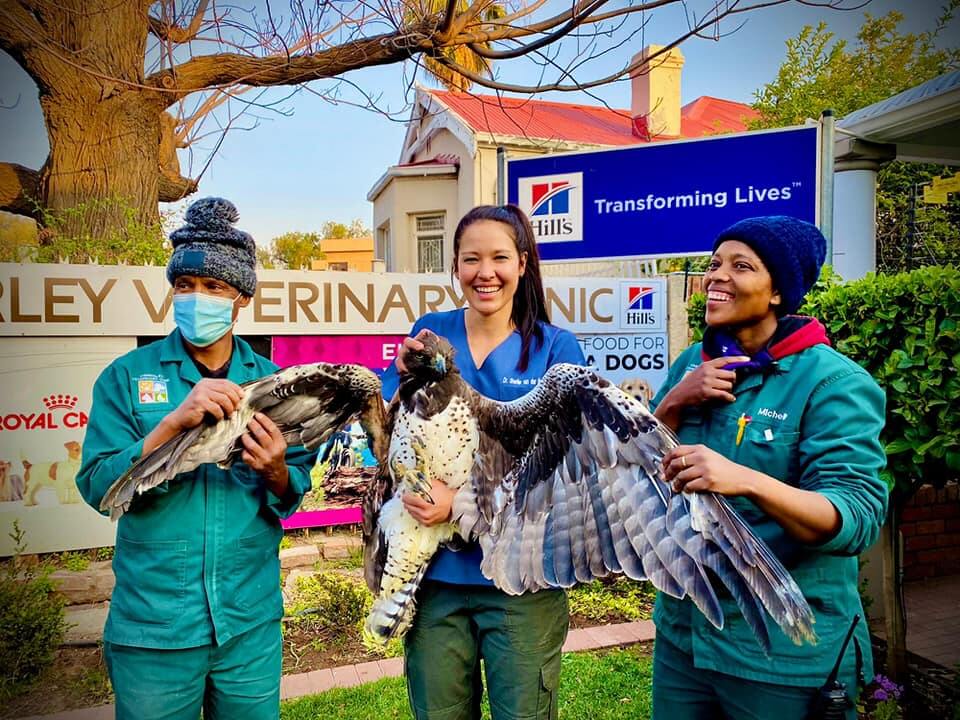
by Rina Van Eeden | Aug 20, 2021 | Feel Good Stories
Our Patient of the Week – a stunning Martial Eagle!
The largest African eagle, capable of knocking a full-grown off of his feet!
This brave bird was rushed to our clinic a few weeks ago for gunshot wounds resulting in a badly fractured right wing.
After intense supportive care, we managed to repair the broken wing with an external fixator.
This week he was finally sent to a rehabilitation facility where he will be monitored and slowly but surely be prepared for release.
We are positive that this big boy will make a full recovery. We’re excited to see the follow-up radiographs in a few weeks time!
Martial Eagles are the largest of the African eagles. Martial eagles are found in most of sub-Saharan Africa. They prefer to live in open wooded areas and woodland edges, wooded savannah, and thornbush areas.
They have enough power in one foot to break a man’s arm. The Martial eagle weighs in at almost 6.5kg, and has a wingspan of about 193cm. It is one of few eagle species known to hunt primarily from a high soar.
Martial eagles are carnivorous and opportunistic predators. They prey on mammals, birds, and reptiles. They even hunt small antelopes, some monkeys, young domestic goats and lambs and water birds! When they want a challenge, these eagles may prey upon even potentially dangerous prey, such as monitor lizards, venomous snakes, jackals, and some wild cats. The main threats to Martial eagles is hunting and habitat loss. Farmers tend kill the birds because they hunt domestic animals.
Like this:
Like Loading...
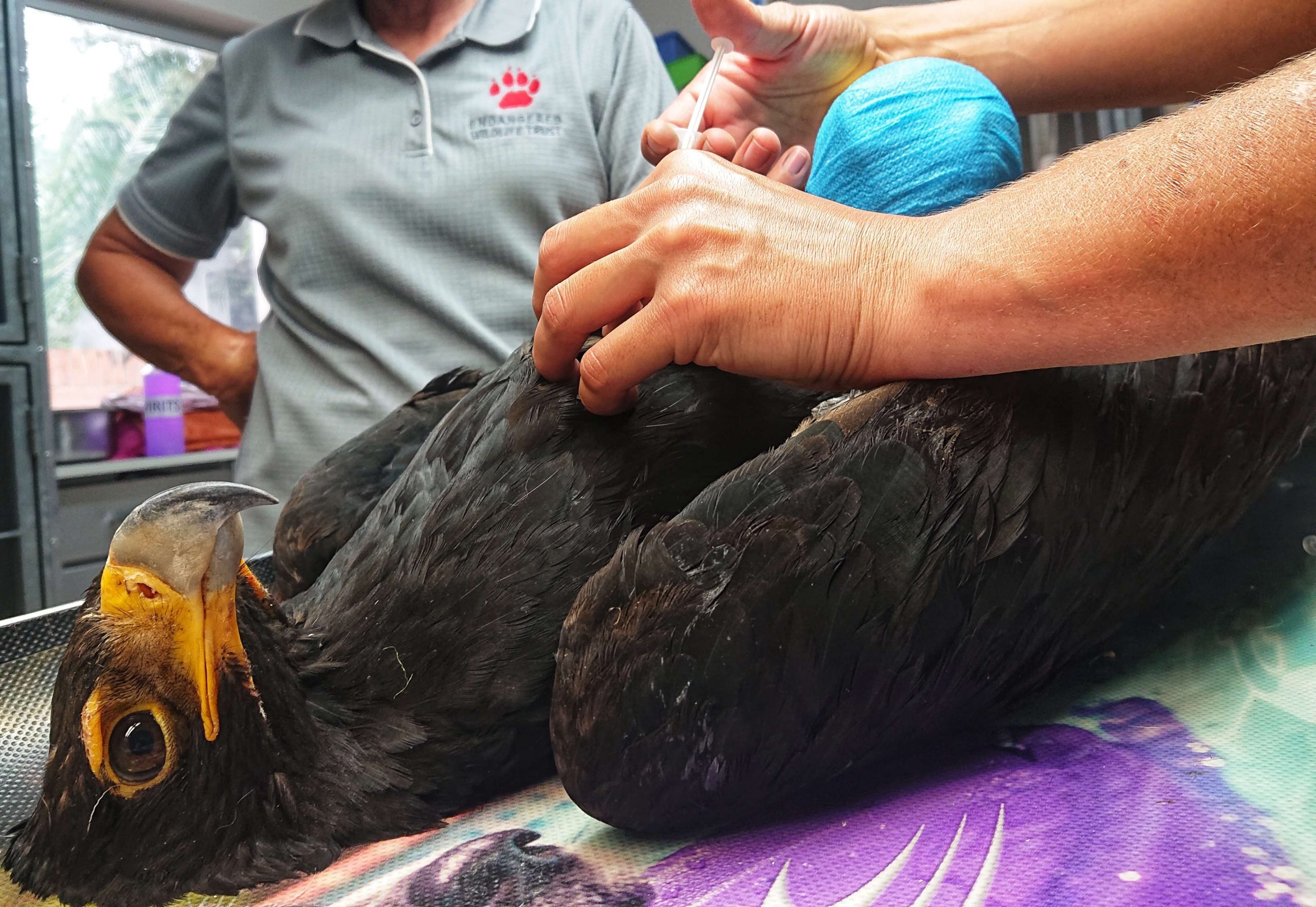
by Rina Van Eeden | Jul 15, 2021 | Feel Good Stories
Featherhead – The Verreaux’s Eagle
Early February 2021, our clinic was visited by Ronelle Visagie, from the Endangered Wildlife Trust, with an ill Verreaux’s Eagle. She had driven all the way to De Aar to fetch the injured bird.
After having taken radiographs, we had found no broken bones, but the eagle could not open it’s right foot or stand upright. In order to stop further contraction of the foot, we wrapped it around a rather large tennis ball!
After 2 days, Ronel had removed the ball and the claw stayed open. The eagle was still very weak and lame in that limb. She was confined to cage rest for 4 weeks, where after she was placed in a larger aviary to see if she would be able to fly. After only a week, she was doing so well that she could be released!
The Great Release
She was released on the same farm she was rescued and was taken to the spot where she was found. She’s the female of a breeding pair. In that time they had started building nests for the new breeding season. She took off quite strongly and after a rather long flight successfully perched on a nearby hill. There she found her mate patiently waiting for her.
The children of the couple who rescued this gorgeous bird named her Featherhead and both were present for her release, an experience that they will always remember.
Featherhead has since been tracked vast distances and is doing very well since her release.
A huge thank you to Ronelle from EWT for dedicating her time to the spectacular raptors of our beautiful country, as well as to the amazing people of the community who had taken the time to help this injured eagle.
For more on the Verreaux’s Eagle, check out the Animalia website: https://animalia.bio/verreauxs-eagle
Like this:
Like Loading...
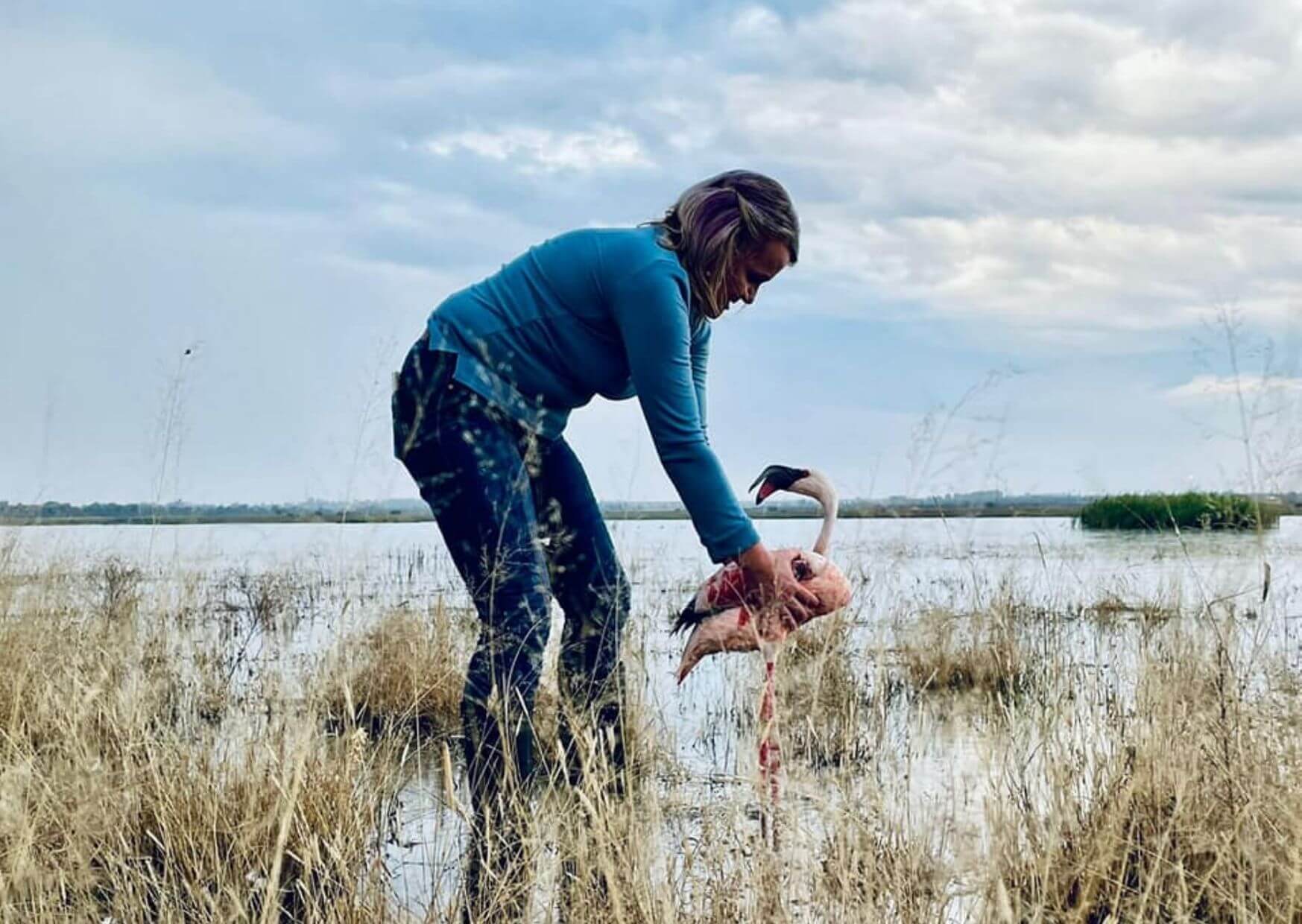
by Rina Van Eeden | May 4, 2021 | Feel Good Stories
The day we have all been waiting for and long worked towards has finally arrived. Our 4 beautiful flamingo children have finally been released!
After months of interesting bandages, surgeries and lots of love, these beautiful Lesser Flamingos are finally where they belong.
The Lesser flamingo is the smallest of all flamingos. They inhabit coastal and inland wetlands of sub-Saharan Africa and part of India. They breed on large alkaline and saline lakes, salt pans, and coastal lagoons.
Lesser flamingos mostly eat blue-green algae but occasionally will take crustaceans and small insects.
A huge thank you to Ester van der Westhuizen, Debbie Smith, Dr Donovan Smith, Dr Sherike van der Merwe and Sr Anmari Coetzee for dedicating so much time, expertise and love to these fantastic four. We’re going to miss these mischievous little dudes!
Did you know – The word Flamingo actually comes from the Portuguese language and loosely translates to “red goose”? This is primarily due to their flying formation and the funny honking sound they make!
Lesser Flamingos are also not born with their beautiful pink plumage. The impressive mixes of roseate and coral pinks are due to the type of food they consume!
For more on the Lesser flamingo, please check out the Animalia website – https://animalia.bio/lesser-flamingo
Like this:
Like Loading...
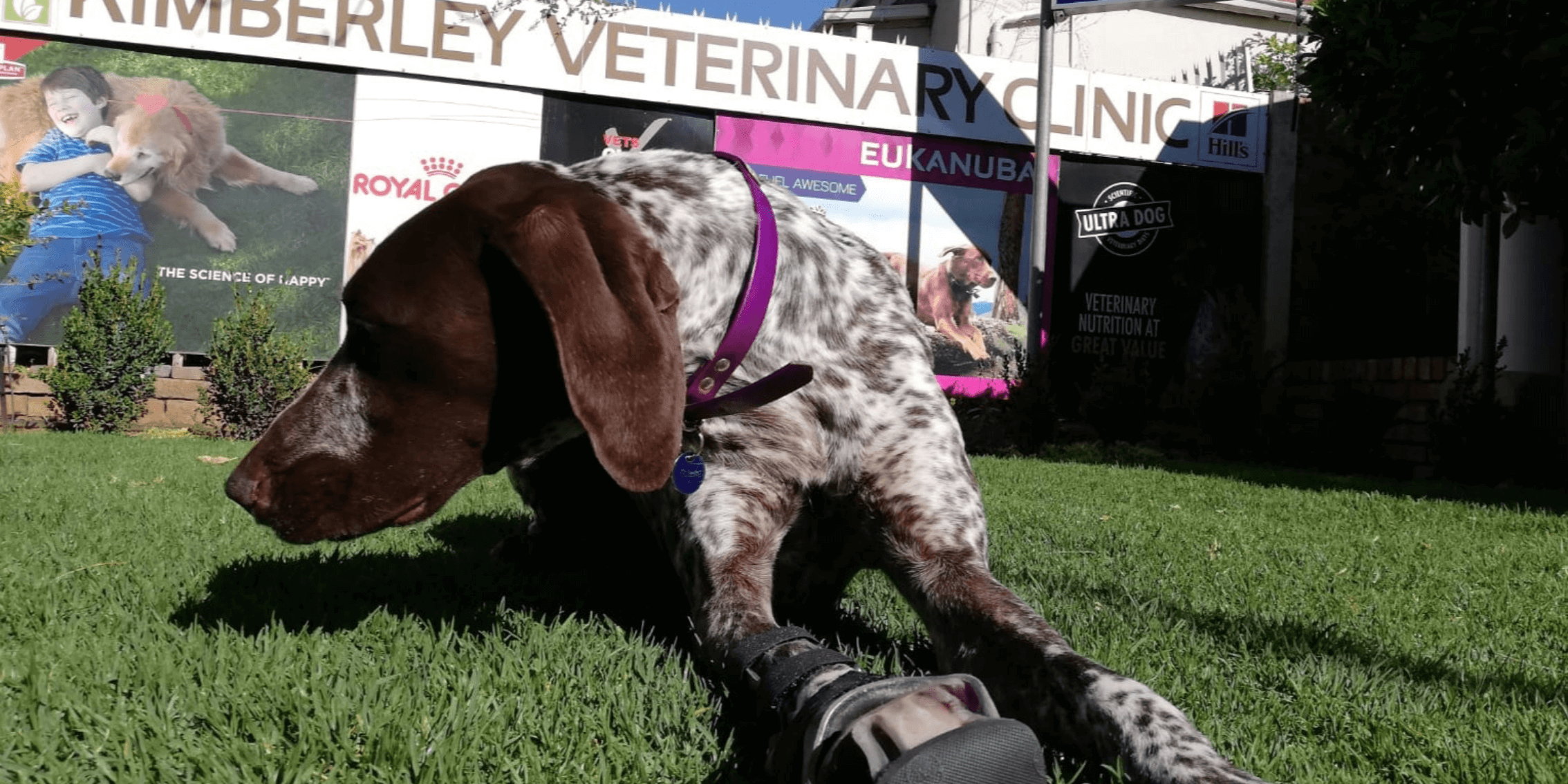
by Rina Van Eeden | Sep 21, 2020 | Feel Good Stories
Kendi and her Animotion Foot Brace
Kendi’s story is a very unique one. When she was still a puppy, probably about 4 weeks old, she broke two of her front toes. They were completely shattered! Subsequently, the growth plates of those toes closed. After the toes had healed, they completely stopped growing.
Her third toe was burdened with carrying all of her weight and eventually had to be partially amputated to help even out the weight-bearing responsibilities.
Kendi has been struggling with pain in her foot and front leg for a while now. But thanks to Animotion, she will finally be able to live practically unhindered.
Who Is Animotion
Animotion is an incredible company full of people who have dedicated themselves to creating stunning orthopaedic braces and prosthetic limbs for ALL kinds of animals. Even rhinos and vultures!
Their Mission – “To improve mobility for animals through innovative, customised veterinary orthotic and prosthetic solutions. By providing biomechanically active prescription devices and utilising state-of-the-art technology, we can offer enhanced quality of life for animals.”
These braces are individually crafted for each patient they consult.
After a thorough, guided step-by-step casting process, Werner Smit and the rest of the Animotionteam crafted Kendi’s and this week she got to try it out for the first time!
It will take some getting used to, but, with her – and a few slight alterations, she will be able to move happily ever after.
Like this:
Like Loading...
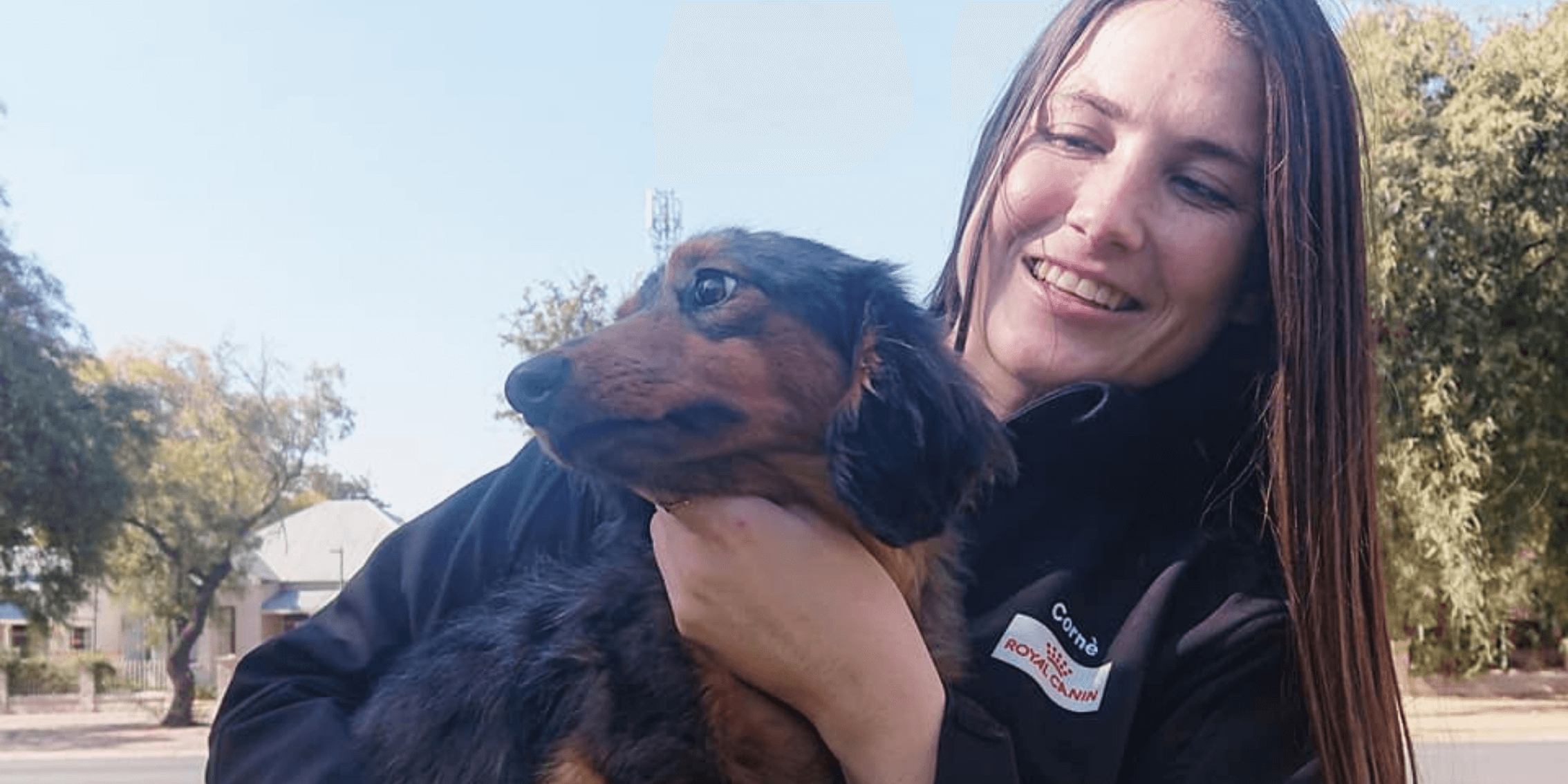
by Rina Van Eeden | Sep 8, 2020 | Feel Good Stories
IVDD in Dogs – Luna’s Story
Luna is another one of our incredible success stories.
She had been diagnosed with Intervertebral Disc Disease (IVDD) quite some time ago.
She couldn’t use her hind limbs when she first arrived.
After expert veterinary care, daily physiotherapy and endless snuggles, Luna started not only moving her hind legs, but she started walking!
After a long six and a half weeks in our care, Luna has finally gone home to her family.
While we’re sad to see her go, we’re so happy for the time we spent with this miracle pup.
A huge thank you to her mom and dad for trusting us with their special fur-kid and their endless love and support throughout her recovery.
What is IVDD?
IVDD is the degeneration and subsequent herniation of the intervertebral disc which results in compression of the spinal cord or spinal nerve.
Clinical signs of IVDD depend on the type of disc herniation and location in the spine. Starting at the neck and moving toward the tail are five regions — the cervical, thoracic, lumbar, sacral and caudal vertebrae.
Symptoms:
- Limping, lameness or unsteady walking
- Dragging back legs
- Stumbling over back feet
- Hunched back or neck with tense muscles
- Weakness
- Pain
- Unwillingness to jump
- Loss of bladder and/or bowel control (urinary and/or fecal incontinence)
- Difficulty posturing to urinate/defecate
- Paralysis (i.e., complete loss of function in front or hind limbs)
Dachshunds are among the most commonly affected breeds and the chances of getting IVDD are greatly exacerbated if the dog is overweight.
Disc extrusion can happen as early as 1–2 years of age and clinical signs are often acute and severe.
We recommend that dachshund doggos are taught not to jump onto or off of beds or couches and if they are in the habit already, that they are provided with a ramp so that they can clamber along safely.
Let’s keep our dachshunds happy and healthy!
For more information on IVDD in pets, check out the trusted petMD website – https://www.petmd.com/dog/conditions/neurological/c_dg_intervertebral_disc_disease
Like this:
Like Loading...

